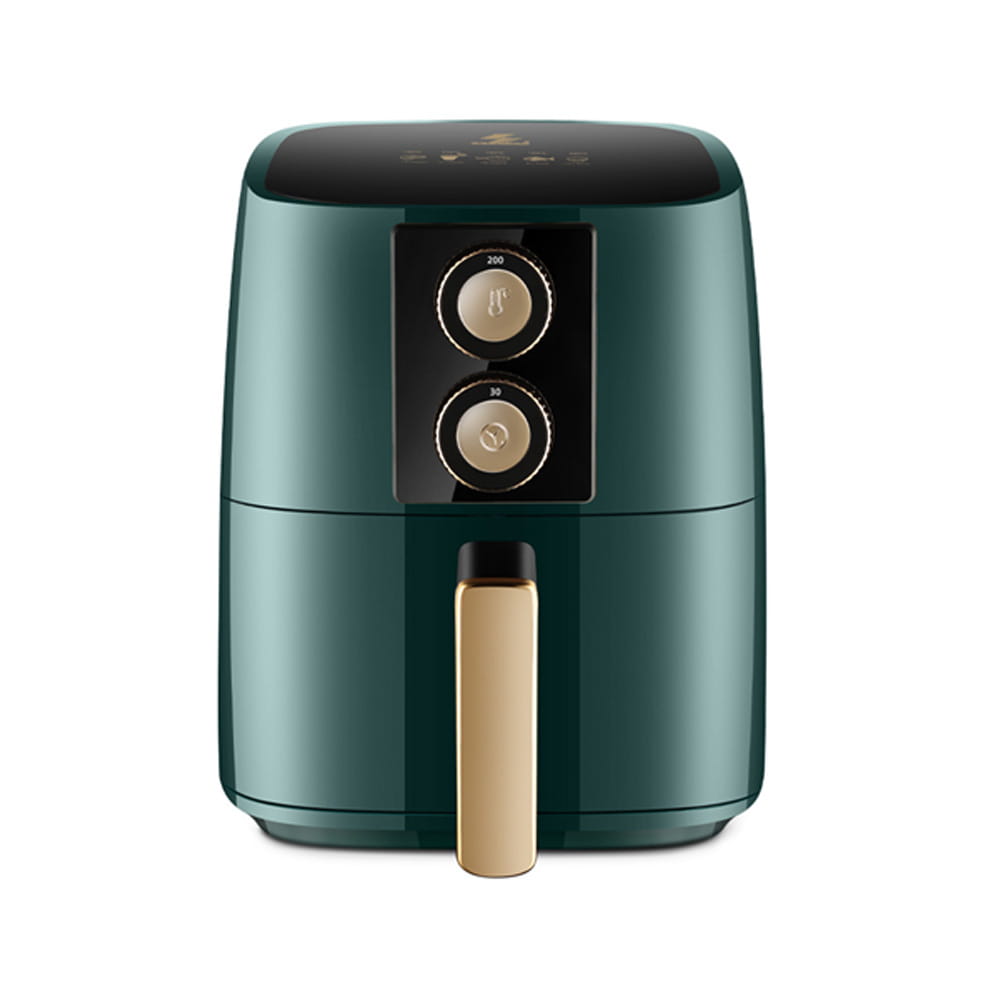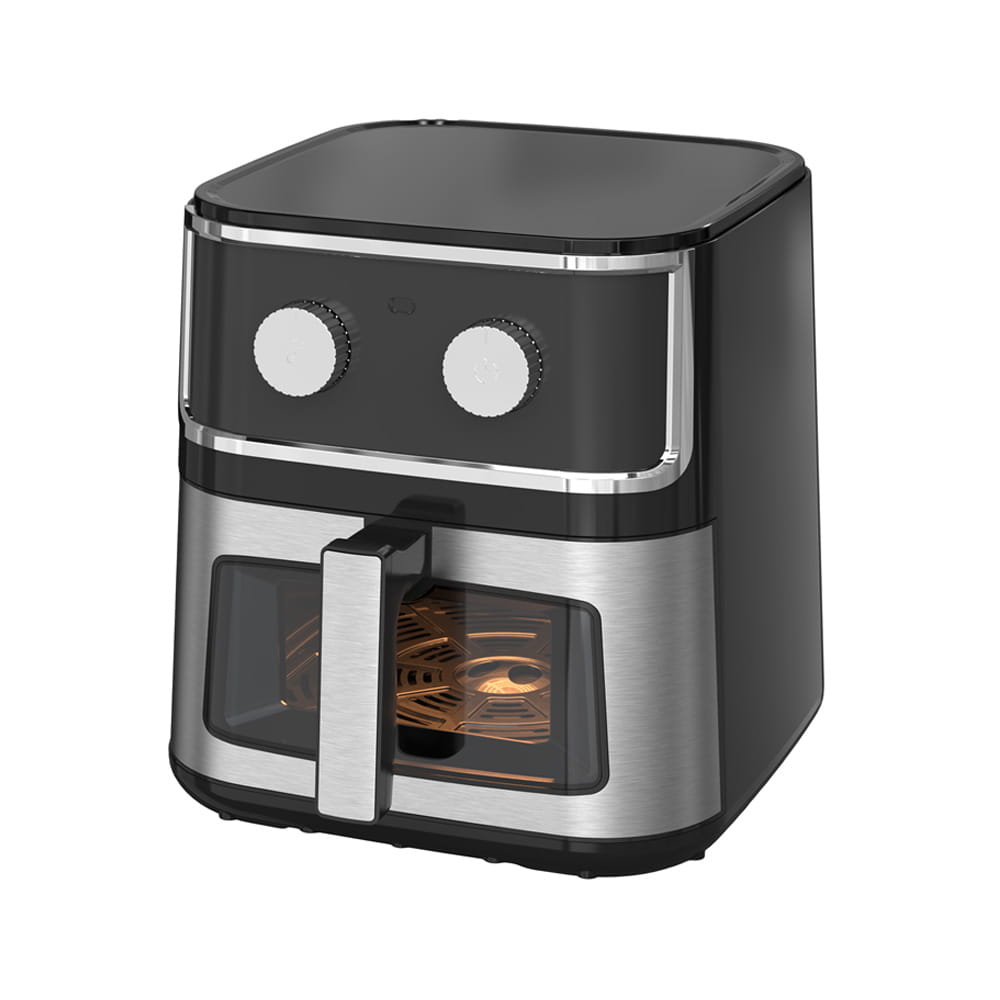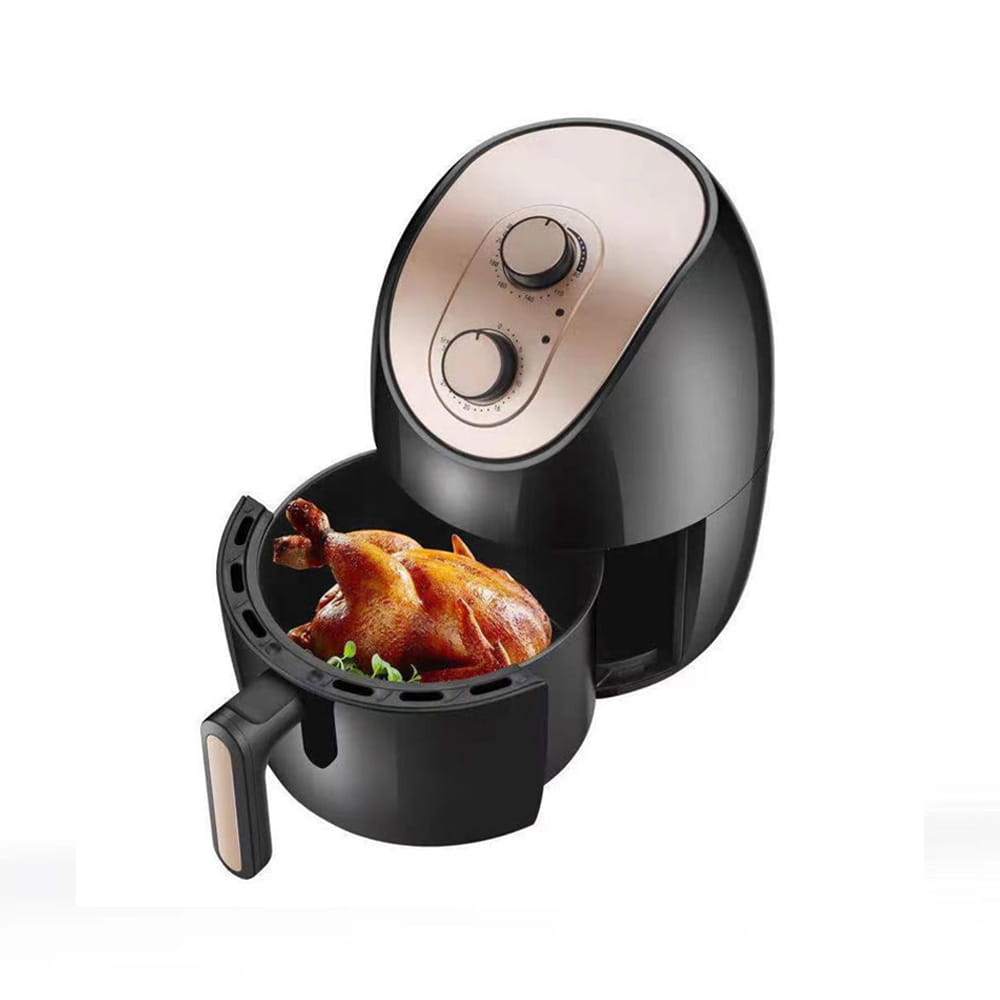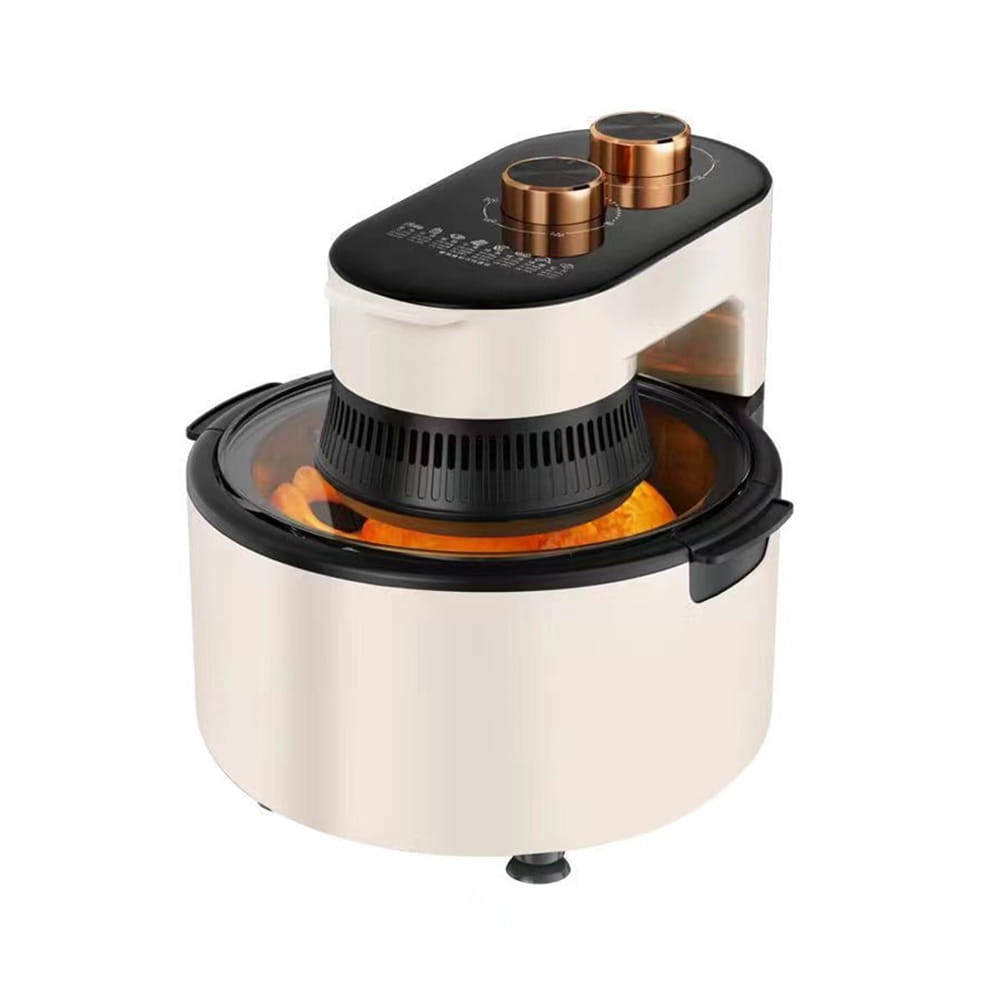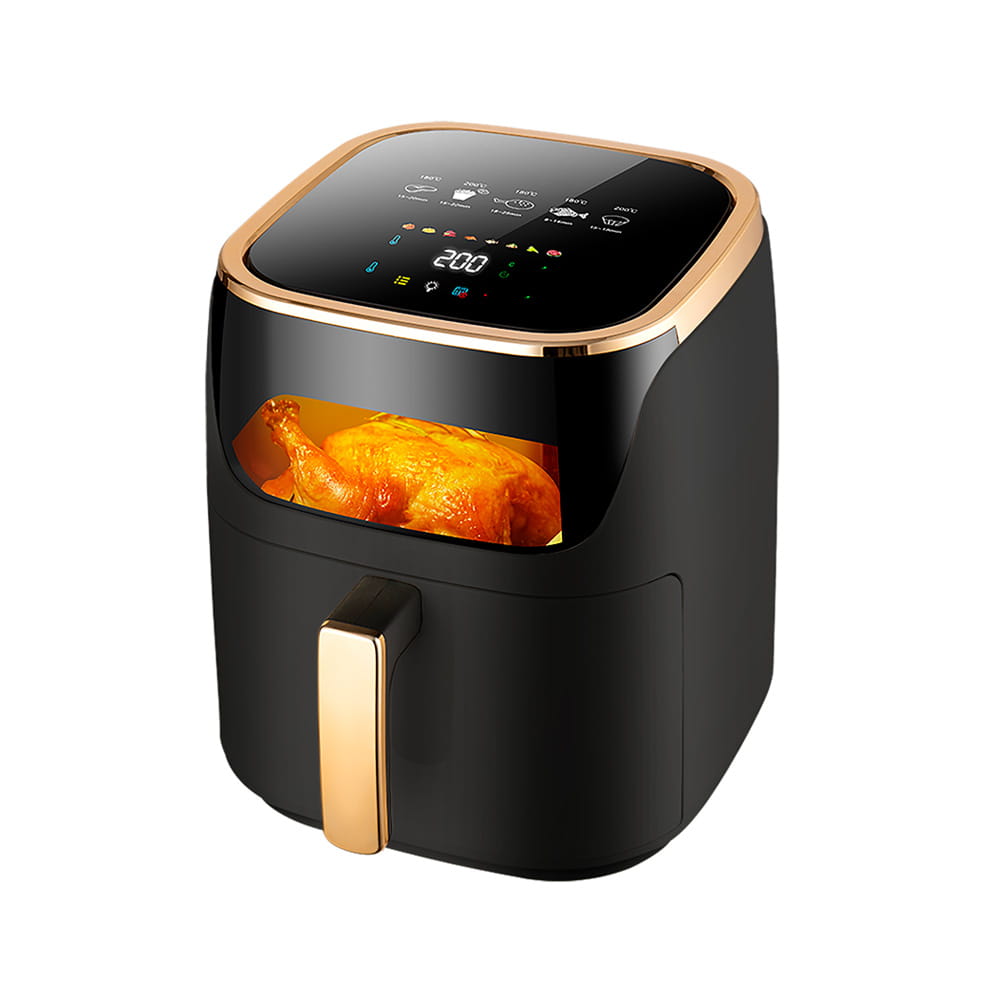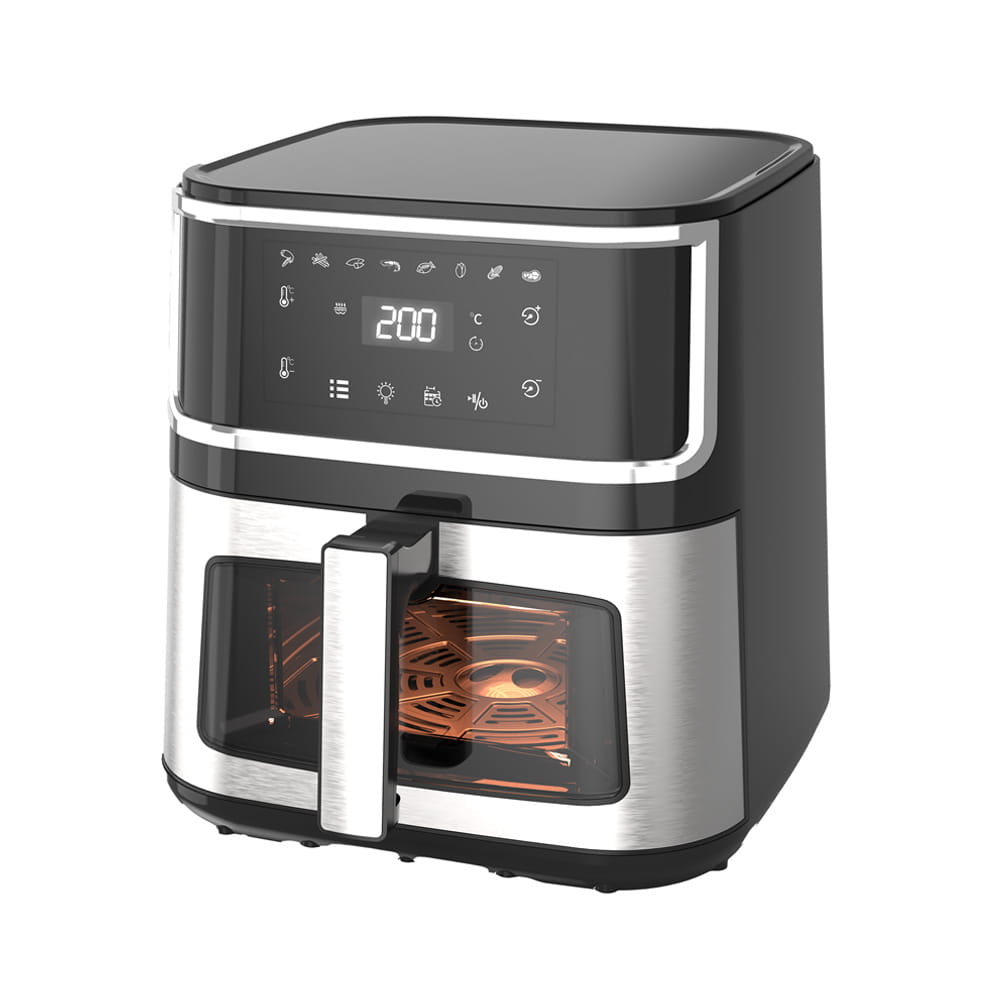The mechanical air fryer , a modern kitchen appliance, is celebrated for its highly efficient, low-oil cooking characteristics. From a professional perspective, the foundation of its exceptional cooking performance lies in a sophisticated, composite heat transfer mechanism. This mechanism is not singular but ingeniously combines Forced Convection, Thermal Radiation, and a limited degree of Heat Conduction. High-speed, high-efficiency forced convection serves as the primary energy carrier and driving force.
I. Forced Convection: The Primary Energy Carrier
The dominant mode of heat transfer in a mechanical air fryer is forced convection. The device utilizes a mechanical system to intentionally accelerate and control the movement of hot fluid (air), dramatically boosting the rate of heat transfer efficiency.
1. Generation and Circulation of High-Velocity Airflow
The core components of a mechanical air fryer are the high-performance Turbine Fan and the Heating Element. The fan is strategically positioned near or above the heating element. When the fan operates at high speed, it forces the surrounding air to pass through the high-wattage heating element, instantly elevating the air temperature to the predetermined high setting (typically between and ).
Subsequently, the fan drives this high-temperature air into the fryer's Cavity space at high velocity and volume. This forcibly accelerated hot air creates intense Eddy Currents and a highly Turbulent flow field within the chamber.
2. Enhancement of the Convective Heat Transfer Coefficient
In the science of heat transfer, the heat flux is described by Newton's Law of Cooling: . Here, is the Convective Heat Transfer Coefficient, and is the temperature difference between the fluid and the object's surface.
The high-speed airflow generated by the forced fan in the air fryer significantly increases the fluid's Reynolds Number , maintaining the air state within the chamber in a highly turbulent regime. Under turbulent conditions, the value of is substantially greater than that achieved under natural convection. The increase in the heat transfer coefficient means that for the same temperature difference , heat is transferred from the hot air to the food surface at a much higher rate , enabling rapid surface drying and cooking. This highly efficient heat exchange is crucial for the swift formation of the food's crisp outer layer.
II. Enhanced Radiation: Non-Contact Thermal Supplement
In addition to forced convection, thermal radiation plays a critical, supplementary role in the air fryer's heat transfer mechanism, especially prominent during the later stages of cooking.
1. Direct Contribution from the High-Temperature Element
The heating element, situated above the food, typically operates at an extremely high temperature, often reaching a state of Red Heat. According to the Stefan-Boltzmann Law, the radiative heat transfer power is proportional to the fourth power of the absolute temperature of the emitter: .
Consequently, the heating element emits a significant amount of Infrared Radiation directly toward the food in the cavity. This radiation, an electromagnetic wave, transfers energy to the food surface without requiring an intervening medium, bypassing the air entirely.
2. Mimicking Traditional Frying Effects
Thermal radiation provides an intense, concentrated surface heating effect. This effect shares similarities with the rapid surface browning seen in traditional deep-frying, caused by the contact with high-temperature oil. The combination of thermal radiation and high-speed convection ensures that the food surface not only heats up quickly but also reaches a sufficiently high temperature for drying, creating the desired "fried" texture.
III. Conduction Transfer: Fundamental Contact Action
Heat conduction is the most basic of the three heat transfer modes, primarily localized in two areas within the mechanical air fryer:
1. Food and Basket Contact Surface
Heat transfer occurs via conduction at the interface where the food directly touches the basket or the crisper plate. However, because the basket is generally designed with numerous holes to facilitate airflow and oil drainage, the conductive contact area is small. Therefore, its contribution to the overall heat transfer process is relatively minor.
2. Internal Heat Distribution within the Food
Conduction is the ultimate mechanism for achieving internal cooking of the food. Heat is initially concentrated on the food surface through convection and radiation, then gradually permeates and transfers from the surface to the food's Core. The food item's own Thermal Conductivity and Specific Heat Capacity determine the speed of its internal cooking process.
IV. Professional Advantages of the Composite Mechanism
The success of the mechanical air fryer lies in its expert coupling of these three mechanisms:
-
High Efficiency: High-speed forced convection ensures an extremely high rate of heat exchange, minimizing preheating and cooking times.
-
Uniformity: The aerodynamic design of the chamber (e.g., turbine, baffles) ensures that hot air uniformly covers all surfaces of the food, mitigating uneven heating issues that can arise from insufficient conduction.
-
Texture Optimization: Enhanced radiation provides rapid surface drying and coloring capability, serving as the final technical assurance for achieving the desired "fried" crispness.
This composite heat transfer structure enables the appliance to successfully simulate the rapid, uniform, and crispy characteristics of traditional frying, all without the necessity of using large volumes of oil as a heat transfer medium.


